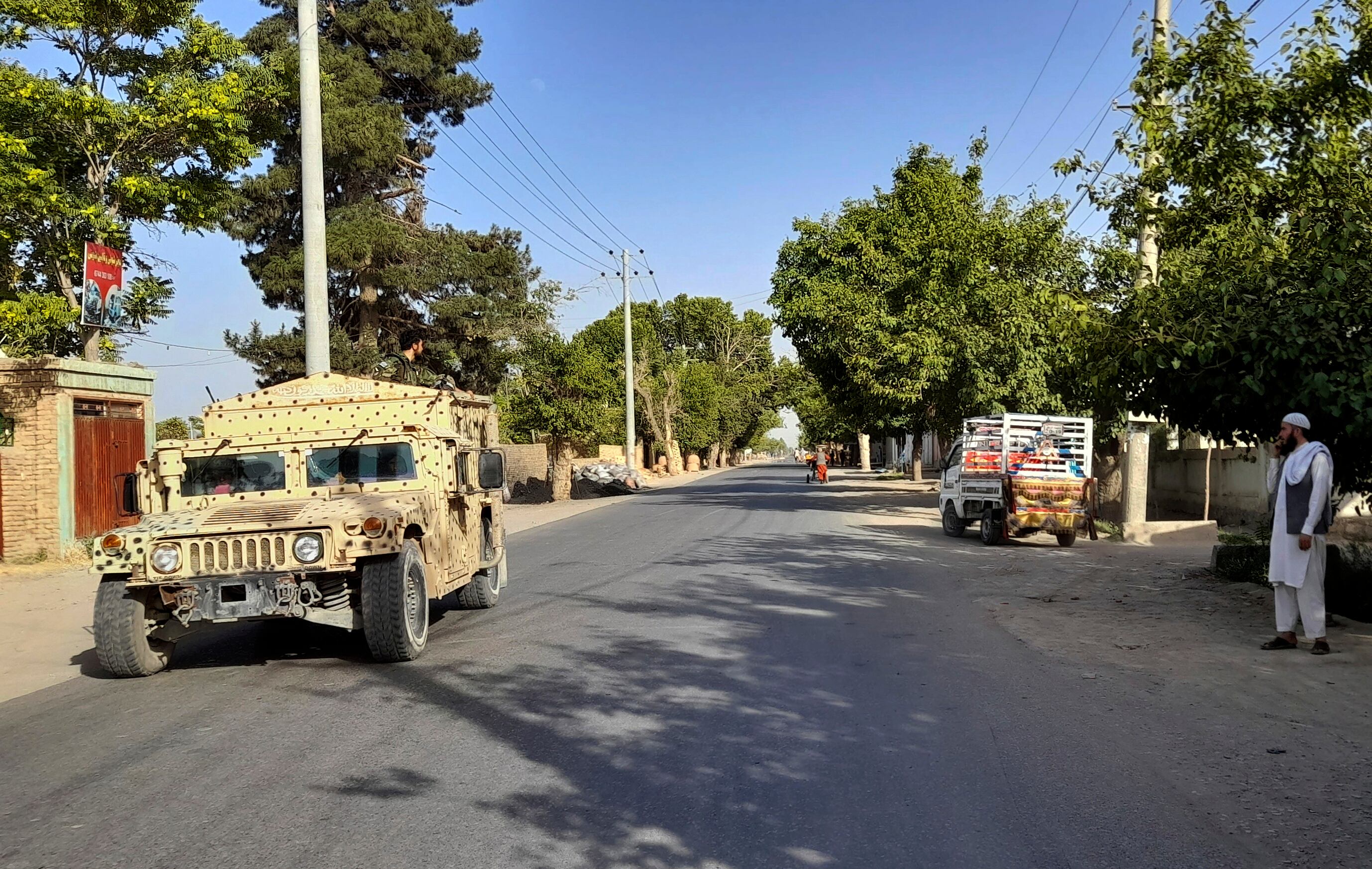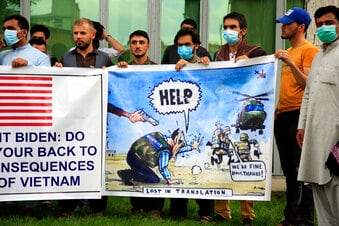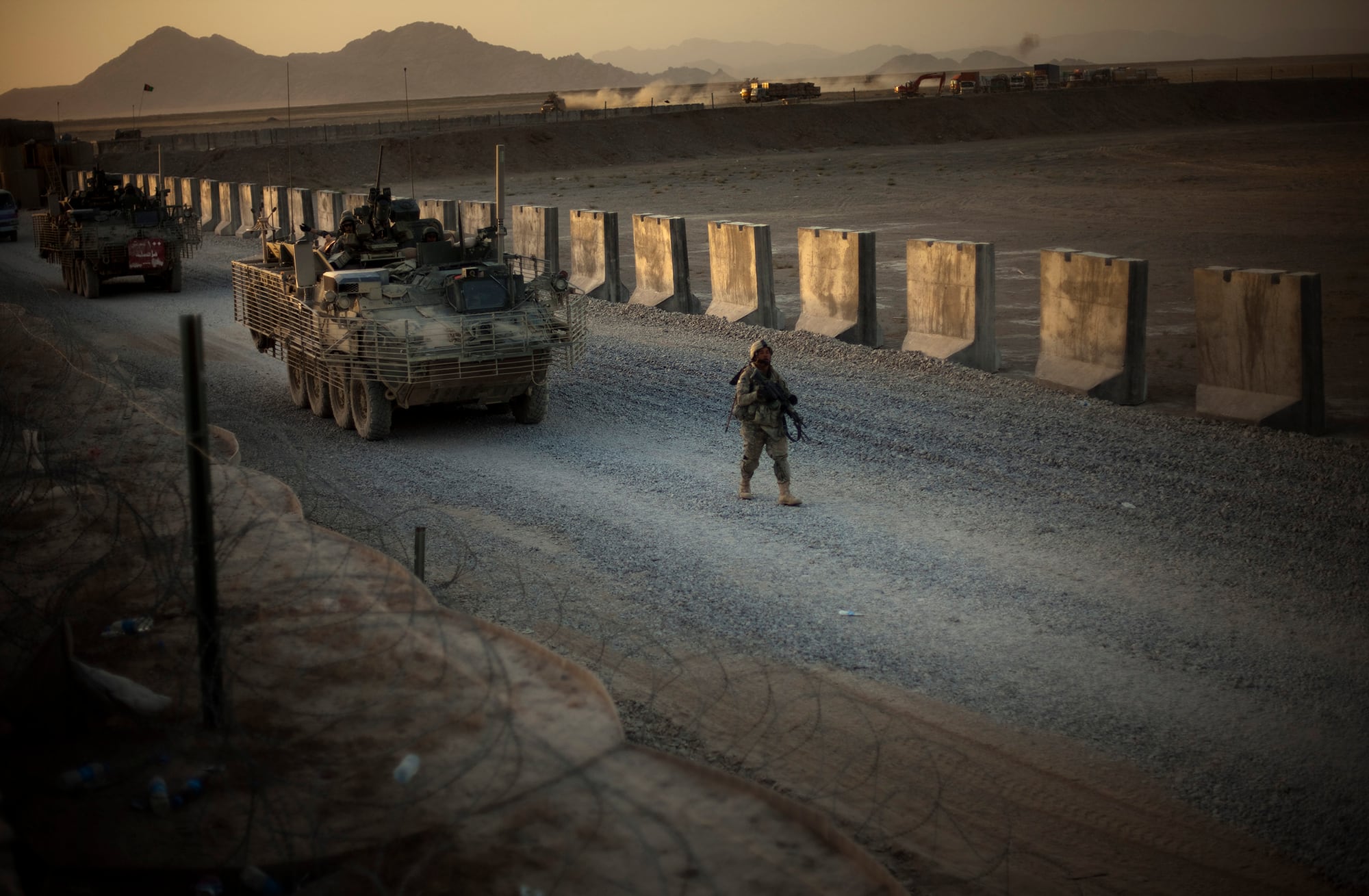U.S. officials will begin evacuating some Afghan nationals out of that country to an unspecified safety zone as concerns rise about the safety of allies there, a senior White House official confirmed Thursday.
The group of evacuees will include “Special Immigrant Visa applicants who have served as interpreters and translators” and are “in the pipeline” and currently awaiting approval to emigrate to the United States. The New York Times first reported news of the evacuations on Thursday morning.
White House officials have not said where the individuals will be relocated or how many people are involved, only that the moves will be “in full compliance with U.S. consular law and in full coordination with Congress.”
RELATED

The news represents a shift in the administration’s stance on the issue of the 18,000-plus Afghan nationals looking to leave the country ahead of the U.S. military drawdown, set to be finished by Sept. 11.
On Wednesday, White House press Secretary Jen Psaki said that State Department officials were “processing and getting people out [of Afghanistan] at a record pace” and working with Congress to “streamline some of the requirements that slow this process down.”
Though officials have acknowledged that plans have been in the works for weeks, the Pentagon on Wednesday offered few details on what an evacuation might look like.
It wouldn’t necessarily involve military aircraft, for example, as chartered civilian planes have been used for similar missions in the past.
“The idea here is to be able to facilitate their departure from Afghanistan to another location so that they can complete the SIV process,” spokesman John Kirby told reporters. “Whether that leads to all of them coming to the United states, or just some, we don’t know,” as some of those decisions will be made on a case-by-case basis.
Officials have been mum on potential temporary housing sites. Kirby said he knew of no requests by the State Department to evaluate stateside DoD installations, which theoretically could be used to house SIV applicants.
There is precedent for that idea, as the Health and Human Services Department is housing unaccompanied minors who crossed the U.S. southern border at Fort Bliss, Texas.
Despite press reports that as many as 100,000 Afghans might be relocated, Kirby said, “I would only say that I’ve seen nothing that would indicate that the number is that high, at this point.”
Both White House and Defense Department officials also acknowledged that they were conducting planning for potential evacuations of those individuals, but had not yet committed to any such moves.
Lawmakers and advocates have been calling for the evacuations for weeks, saying that Afghan nationals who aided American forces are already being targeted by Taliban fighters and other insurgents as U.S. forces pull back their forces.
Earlier this month, a bipartisan group of 22 lawmakers called for the White House to begin “immediately” transporting allies to a safe zone such as Guam to ensure their safety.
“No U.S. entity — to include the Department of Defense, Department of State, USAID, et al. — has the ability or authority to protect them in Afghanistan after our withdrawal,” the group of lawmakers wrote in a letter to President Joe Biden. “It would be a moral failure to transfer the responsibility to protect our Afghan partners onto the shoulders of the Afghan Government. The time is now to honor our promise.”
The senior administration official noted that SIV program processing is continuing, but also acknowledged that “some of these interpreters and translators have been in the process in some cases for years, and are still waiting to receive their visas.”
RELATED

State Department officials have downplayed the September withdrawal deadline as a critical point in the visas process, saying they will continue to process applicants after that mark and will keep a diplomatic presence in the country.
But earlier this week, the Associated Press reported that Taliban fighters had taken control of a section of Afghanistan’s northern Kunduz province, the latest of dozens of districts which have fallen to insurgent forces in the last two months.
In response, Defense Department officials said they will maintain a security relationship with the Afghan government even after the withdrawal, but also noted that the recent violence will not disrupt the withdrawal deadline.
Afghan President Ashraf Ghani is scheduled to visit the White House on Friday to discuss the long-term relationship between the United States and his country, as well as other security issues.
Leo covers Congress, Veterans Affairs and the White House for Military Times. He has covered Washington, D.C. since 2004, focusing on military personnel and veterans policies. His work has earned numerous honors, including a 2009 Polk award, a 2010 National Headliner Award, the IAVA Leadership in Journalism award and the VFW News Media award.
Meghann Myers is the Pentagon bureau chief at Military Times. She covers operations, policy, personnel, leadership and other issues affecting service members.





